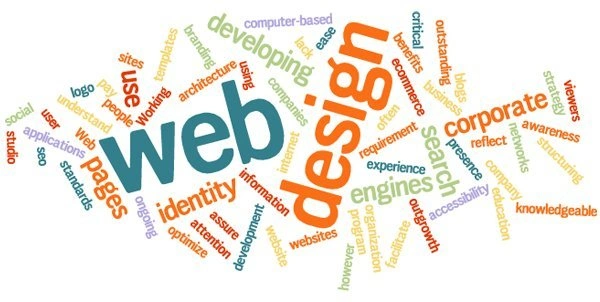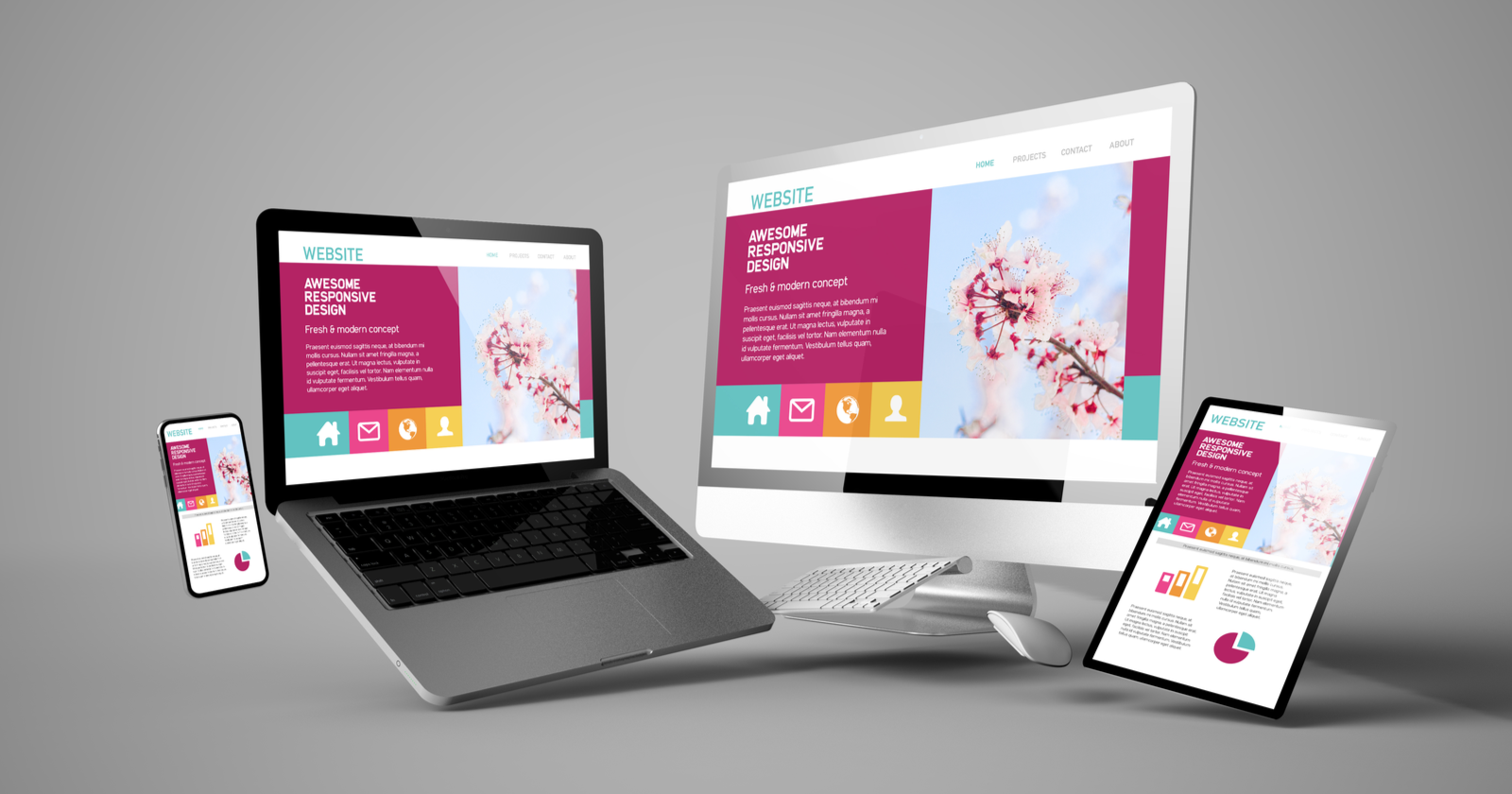Aligned Position Web Design: Building Beautiful and Functional Websites for Your Business
Aligned Position Web Design: Building Beautiful and Functional Websites for Your Business
Blog Article
The Very Best Kinds of Website Design to Enhance Customer Experience and Involvement
In the ever-evolving landscape of electronic communication, the performance of Web design dramatically affects customer experience and engagement. Numerous style approaches, such as minimal, receptive, and interactive layouts, each offer unique benefits that can provide to varied customer demands. Comprehending which sorts of Web layout best offer these objectives can be pivotal for businesses intending to improve client fulfillment and retention. However, the inquiry stays: which style elements absolutely reverberate with customers and foster purposeful interaction? The expedition of these principles discloses critical insights that might redefine your technique to Web design.
Minimalist Website Design
As digital landscapes become progressively messy, minimal Web design has become a powerful approach to boosting user experience. This design viewpoint prioritizes simplicity, concentrating on necessary components while getting rid of unneeded distractions. By making use of sufficient white space, uncomplicated navigation, and a restricted shade palette, minimalist design cultivates clearness and guides individual interest to vital content.
The core principle of minimal Web layout is to develop a seamless interaction for individuals. By lowering cognitive lots, individuals can swiftly understand details without really feeling bewildered. This direct technique not just improves functionality but likewise motivates engagement, as site visitors are more probable to discover a site that is very easy and visually enticing to navigate.
Additionally, minimalist design commonly highlights typography and imagery, making use of these aspects purposefully to convey messages efficiently. In significance, minimalist Web style is not just a fad; it is a thoughtful methodology that acknowledges the importance of user-centered design.
Receptive Web Layout
In today's diverse digital setting, responsive Web style has come to be vital for creating a smooth customer experience across a plethora of gadgets. As customers gain access to sites on smartphones, desktop computers, tablets, and laptop computers, the capacity of a web site to adapt its design and material to different display dimensions and resolutions is vital.
Responsive Web layout utilizes versatile grids, pictures, and CSS media questions to guarantee that Web material exists ideally, no matter the device utilized. This strategy not only improves the visual charm of a web site however likewise substantially enhances usability. Users are most likely to involve with a site that offers a constant experience, as it removes the frustration of having to zoom in or scroll exceedingly.
Additionally, internet search engine, including Google, focus on mobile-friendly internet sites in search rankings. By adopting receptive design, organizations can boost their exposure and reach a broader audience. This technique also streamlines website upkeep, as a single variation of the website can accommodate all tools, decreasing the need for numerous versions. In summary, receptive website design is an essential practice that improves individual experience, engagement, and general satisfaction.
Interactive Website Design
Responsive Web style lays the foundation for improving customer experience, however interactive website design takes this an action even more by engaging customers in a much more vibrant way - Aligned Position Web Design. By including elements such as computer animations, clickable prototypes, and real-time comments, interactive website design mesmerizes individuals, attracting them into a richer browsing experience
This method not only fosters interaction yet additionally motivates individuals to check out material proactively rather than passively eating it. Strategies such as gamification, where customers make benefits for completing tasks, can considerably boost the moment invested in a site and improve total satisfaction. Interactive features can streamline complex details, making it more digestible and pleasurable.

Integrating interactive style aspects can likewise cause higher conversion rates, as individuals are most likely to involve with a website that proactively includes them. Aligned Position Web Design. Ultimately, interactive website design transforms customer experiences into unforgettable trips, guaranteeing that visitors return time after time
Flat Design
Characterized by its minimalistic approach, level design highlights simpleness and functionality, removing unneeded aspects and concentrating on vital attributes. This style viewpoint prioritizes usability, guaranteeing that users can navigate user interfaces effortlessly and effectiveness. By employing a tidy visual, level style removes the clutter frequently located in a lot more luxuriant designs, consequently boosting individual emphasis on web content and performance.
The trademark of level style lies in its use of strong shades, basic typography, and geometric shapes. go right here These elements contribute to a visually enticing user interface that is both contemporary and approachable. Additionally, level style promotes a feeling of clarity, permitting individuals to discern vital activities and details without interruption.
In addition, flat layout is specifically efficient in receptive website design, as its simpleness converts well throughout numerous tools and screen sizes. The lack of detailed structures and slopes reduces packing times, which is vital for keeping customer involvement. As digital landscapes remain to evolve, flat style stays a pertinent option for producing straightforward sites that boost general experience. By concentrating on vital attributes, flat design not only meets customer demands but additionally urges smooth communication, making it an important component of reliable website design strategies.
Flexible Website Design
Flexible Web layout tailors the individual experience by creating several fixed formats customized to different screen sizes and devices. Unlike responsive design, which fluidly adjusts a single layout, adaptive design employs distinct layouts for particular breakpoints, making certain ideal presentation on numerous systems. This approach permits developers to concentrate on the one-of-a-kind features of each device, improving functionality by providing exactly what users need based on their context.
Among the key benefits of flexible Web design is its ability to optimize load times and performance. By offering customized material and images that fit the user's tool, internet sites can lessen data usage and improve loading rates. This is specifically valuable for customers with slower links or limited data strategies.

Furthermore, flexible style promotes a more regulated and consistent branding experience. Since designers develop multiple designs, they can make certain that the visual aspects straighten with the brand's identity throughout various platforms - Aligned Position Web Design. This leads to a natural user experience, improving involvement and promoting individual retention
Verdict
Minimal style Visit Your URL promotes clarity and focus, while receptive layout makes sure versatility across various devices, advertising access. Jointly, these design approaches add to the development of easy to use environments that not just boost fulfillment however also drive greater conversion rates, underscoring their critical relevance in modern Web layout methods.

Minimalist design fosters clearness and focus, while responsive style makes sure versatility throughout numerous tools, advertising accessibility. Collectively, these design approaches contribute to the creation of user-friendly environments that not only boost satisfaction but also drive higher conversion rates, underscoring their crucial value in contemporary Web style techniques.
Report this page